" Our USA Fly-Drives are More than Just a Flight & Car "
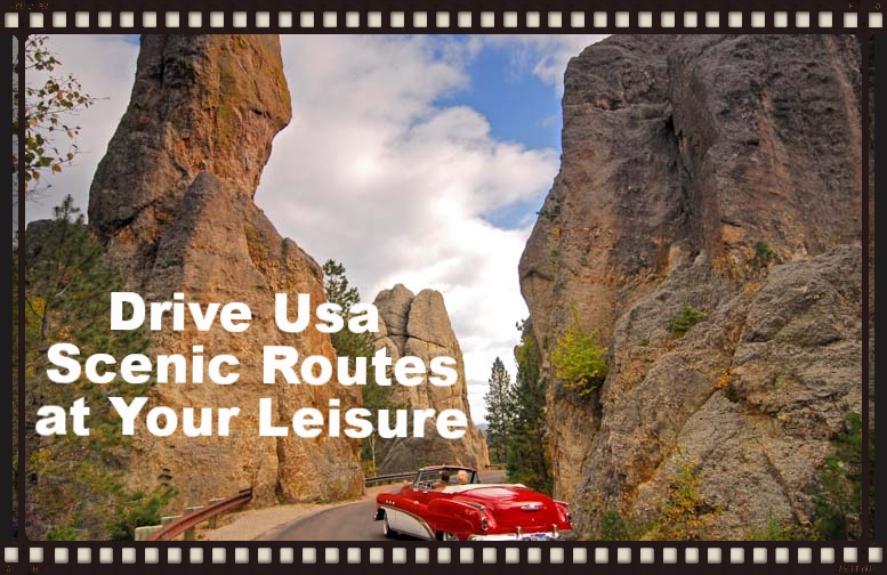
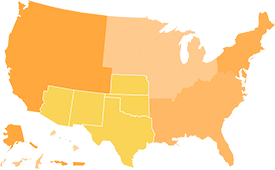
Based on a minimum of 2 people sharing a Compact 2 door Car for 14 days low season 2014 flying from selected UK airports. Car includes Unlimited Mileage, CDW, Theft Protection. Car and Flight Upgrades available !
USA FLY-DRIVE - SW AMERICA
From ocean spray to snowy mountaintops on the highways of the West
With its ten states massed up on along one flank of this great country, the West of the USA offers plentiful settings for road trips – along both mountain passes and seafront stretches. Indeed, the West probably offers the USA’s most iconic coastal adventure. The 424-mile drive between Los Angeles and San Francisco, along the fabled curves of California State Route 1, is a classic among behind-the-wheel holidays. Nor is it alone. There are glorious places, ideally visited in a car, along the shorelines of Oregon and Washington – the latter state proffering the remote Olympic Peninsula, where rainforest-shrouded peaks rear up.
Head inland and there are further areas of rugged terrain where the road has to meander between rock giants. The Cascade Range is a lava-shaped wonderland which can be seen via the Volcanic Legacy Scenic Byway, in Oregon and California. Further east, the Rockies provide high-wire road-trip heaven in Colorado, Wyoming, Montana and Idaho. The West has over 50 highways ranked as ‘National Scenic Byways’ (roads recognised for natural, historic or scenic qualities) or ‘All-American Roads’ (roads that are deemed to be tourism destinations in their own right). Even Alaska joins the party, and can stage summer escapes on the 125-mile Seward Highway, which explores the Kenai Peninsula.

The king of coastal road trips on California State Route 1
There is an argument for California State Route 1 being the most beautiful stretch of road anywhere in the USA. This is the impressive highway that hugs the edge of central California for 656 miles, often in splashing distance of the Pacific. Certainly, it makes for a glorious road-trip. It is entirely feasible to take State Route 1 from Los Angeles all the way to San Francisco – a journey of some 424 winding miles that is blessed with incredible scenery.
This is an adventure that could last a week if travellers choose to take it slowly as there is much to see en route. Above Los Angeles is the pretty resort town of Santa Barbara and remote coves, such as Point Sal State Beach. Then, north of San Luis Obispo, the road hits its stride, the Pacific roaring to land at Cape San Martin, the trees of Los Padres National Forest welling up on the other side of the tarmac. Further on, Big Sur is a celebrated stop, little hotels and restaurants caught among the trees as the coast drops away steeply below.
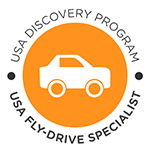
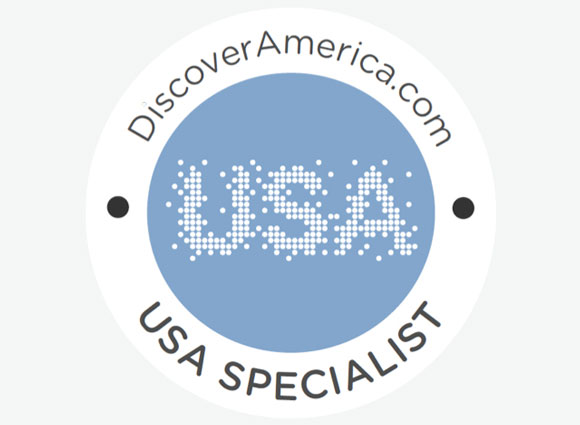
At a glance
Route 1 is also known as the Pacific Coast Highway and it stretches from California’s southern border to its northern border with Oregon. Travellers could choose to begin their journey in the laid back city of San Diego and drive the full length of the state’s coastline, but a handy hint is to recommend driving from north to south to ensure there is nothing between the driver and the spectacular ocean views.
- Visitors will find an abundance of famed attractions along California’s Route 1, as well as multiple lay-bys allowing drivers to pull over and enjoy the views. Holidaymakers can experience the opulently decorated Hearst Castle, enjoy family fun at Monterey Bay Aquarium, discover world class golf at Pebble Beach and classic amusements at the Santa Cruz Beach Boardwalk.
- Although it is feasible for visitors to drive from Los Angeles to San Francisco within a day, recommend that travellers take up to a week to make the journey along Route 1. More time allows visitors to explore the quaint and cool California towns along the way, including Santa Barbara, San Luis Obispo, Carmel and Santa Cruz.
- The Pacific Coast Highway is a spectacular drive for visitors looking to explore California’s culinary scene. San Diego serves superb Mexican-style cuisine, Santa Barbara offers wonderful wines, Monterey boasts spectacular seafood, whilst Paso Robles offers up fresh local produce from its surrounding farms and fields. Visitors will also find local fare at farmer’s markets en route.
- California has many other spectacular drives to offer away from its coast. The 81-mile Death Valley Scenic Byway allows drivers to experience the rolling hills and dunes of Death Valley, whilst Northern California holds the state’s portion of the Volcanic Legacy Scenic Byway (California and Oregon), an All-American Road that explores this area of wild, volcanic landscapes.
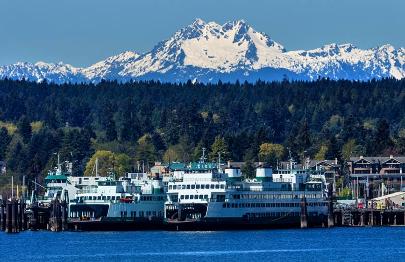
Olympic-sized scenery in the far NorthWest corner of the USA
The Olympic Peninsula is the bluff of land that wells up to the west of Seattle, sheltering the biggest city in the state of Washington from the Pacific. This is a wonderful place for a fly-drive trip, thanks to the beauty of its scenery: the Olympic Mountains rising high and green, the massive Mount Olympus rearing to 7,965ft at the heart of the range; thick areas of rainforest – including the Quinault Rainforest – swarming at the side of the road.
The Peninsula is easily reached from Seattle – via a ferry ride from the city waterfront, across Puget Sound, to Bainbridge Island. Near here, drivers can pick up the iconic highway of US Route 101, which traces the outer portions of the region. It will carry road-trippers along the north edge of the Peninsula, past the elegant curve of Lake Crescent. From here, explorers can turn onto State Route 112 to visit Cape Flattery, the northwestern corner of the mainland United States – or forge south on the 101, past dramatic ocean coves such as Ruby Beach.
- The quiet roads surrounding the Puget Sound provide spectacular drives, not just for their scenic beauty, but also for the artistic and cultural scenes of nearby rural communities. Bremerton has a burgeoning arts district, whilst nearby Poulsbo celebrates its Scandinavian heritage through its local cuisine. Tiny towns such as Gig Harbor offer respite from city living.
- Washington’s Olympic Peninsula contains some of the state’s must-see natural sites. Cape Flattery is the most northwesterly point of the contiguous United States, whilst Olympic National Park offers temperate rainforest scenery with the Hoh Rainforest, majestic mountain views of Mount Olympus and rugged Pacific beauty at Rialto Beach.
- Washington State is home to 23 scenic byways, including two All-American Roads. The 85-mile Chinook Scenic Byway offers beautiful views of Mount Rainier as it follows the White River over the Chinook Pass. Meanwhile, the International Selkirk Loop, which crosses into neighbouring state Idaho, explores the wild beauty of the Selkirk Mountains that stretch across the Canadian border.
- Another classic Washington drive is The Cascade Loop. This 440-mile Scenic Byway begins less than 30 miles away from Seattle and allows visitors to explore some of Washington’s most spectacular natural scenery. Circling the Cascade Mountain Range, drivers can enjoy views of the Columbia River Valley, Lake Chelan and North Cascades National Park.
- Washington is a great choice for autumn drives. Visitors looking to soak up a spot of colour should drive the North Cascades Loop for superb displays, particularly around Ross Lake and the town of Leavenworth; whilst the 21-mile coastal Chuckanut Drive offers beautiful autumnal colour and views of the San Juan Islands.
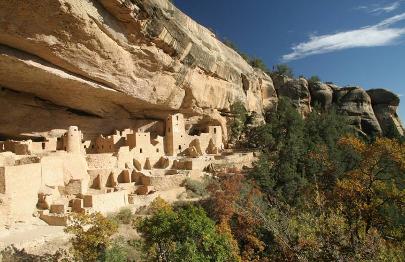
As one of the epicentres of the Rockies, Colorado is famed for its raw scenery – and its beauty is openly apparent in its southwest corner, where the San Juan Mountains rear up.
This part of the state is home to the San Juan Skyway, an All-American Road that clips for 233 miles across lofty passes and between high peaks. The Skyway is convenient for road-trippers, as it forms a loop in and out of the city of Durango – an obvious starting point.
From the city, US Highway 160 runs west past Mesa Verde National Park, with its cliff dwellings built in the 12th century by the ancient Anasazi people. Then Colorado State Highway 145 cuts north into the trees of San Juan National Forest, and there are many switchback turns as the road crosses Lizard Head Pass at 10,222ft – offering views of the 14,246ft Mount Wilson. At Placerville, State Highway 62 curves northeast for glimpses of the 14,150ft Mount Sneffels, before State Highway 550 dashes south back to Durango.
At a glance Useful Facts
- Travellers exploring the San Juan Skyway can stop and enjoy Colorado’s popular mountain towns. Durango is a historic railroad town where visitors can still board a steam train to experience the journey into the heart of the San Juan Mountains; alight at Silverton for backcountry hiking and off-road driving. En route along the San Juan Skyway, Telluride also offers spectacular skiing and golf.
- Colorado is home to a wealth of scenic byways, including two All-American Roads. As well as the San Juan Skyway, visitors can experience beautiful alpine scenery along the Trail Ridge Road/Beaver Meadow Road. This is the highest continually paved road in the USA (it reaches over 14,000ft/4,267 metres) and visitors can enjoy wildlife and scenery similar to that found in the Arctic Circle.
- The San Juan Highway also cuts across the Trail of the Ancients National Scenic Byway, which links ancient historic sites across the state. As well as Mesa Verde National Park, the only National Park in the USA that is dedicated exclusively to archaeology, visitors can experience the remote stone towers of Hovenweep National Monument and cross into Utah to explore Monument Valley.
- With the spring and summer melt, many mountain passes in Colorado re-open for driving. Indpendence Pass connects Twin Lakes with Aspen and offers fantastic views of the state’s highest peaks; Kebler Pass links Crested Butte with Aspen and features wonderful wildflower displays; and Boreas Pass offers superb hiking and biking spots between Denver and Leadville.
- Visitors to Colorado can also venture into neighbouring Utah for more spectacular scenery. Highway 12, which stretches for 107 miles from Torrey to Bryce Canyon National Park, allows visitors to explore some of the state’s most scenic spots, including Red Canyon, the Grand Staircase-Escalante National Monument and Capitol Reef National Park.
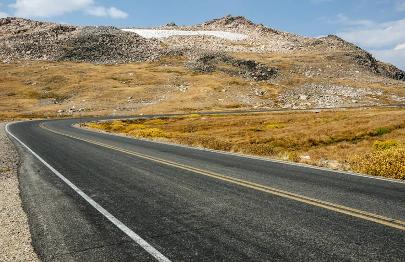
On top of the world where Montana and Wyoming meet
Montana and Wyoming are the Western neighbours that offer some of the region’s finest high-rise scenery, and some of its least-known areas, as the Rocky Mountains dominate.
The combined beauty of these two states is easily glimpsed via a drive along the 69-miles of the Beartooth Highway. This road winds through the Beartooth Mountains (a sub-range of the Rockies), and climbs to 10,947ft where it runs across Beartooth Pass – so high that this section is only normally accessible between May and October. Heavy snow makes it impassable in the winter – and even in summer, drivers should check local conditions before setting off.
The Beartooth Highway is a part of US Highway 212 that curves between the Montana towns of Red Lodge and Cooke City. In doing so, it cuts over the state line into Wyoming – then curls back into Montana. If drivers continue beyond Cooke City, the road crosses the state line for a third time, into Yellowstone National Park, with its celebrated geysers
- Visitors should take most of a day to explore the Beartooth Highway and experience its full scenic glory. They can take in views of the Beartooth Mountains, which contain more than 20 peaks over 12,000ft (3,658 metres), and changing ecosystems from alpine tundra to flourishing meadows and pine forests.
- A prime photo opportunity is at ‘The Top of the World’, the nickname for the highest point along the Beartooth Highway as it reaches 10,974ft (3,345 metres). From here, visitors can enjoy the journey down into Cooke City, taking in the magnificent views from Clay Butte Lookout along the way.
- The remote alpine town of Cooke City is ideal for adventurous travellers. It acts as an entrance to Yellowstone National Park, but (situated at over 7,000ft/2,134 metres) it also offers springtime skiing and summertime hiking, fishing and camping. Red Lodge sits at the base of the Beartooth Highway and offers a charming ranch community atmosphere surrounded by Custer National Forest.
- Visitors can also take a drive to explore Glacier National Park whilst in Montana. The 52-mile Going-to-the-Sun Road takes drivers around sheer cliffs and rugged landscapes and crosses the Continental Divide as it runs through Logan Pass. This is the only road that cuts through the heart of the park, but visitors can also explore the natural landscape on foot.
- Although only home to one All-American Road, Wyoming is road trip heaven. The simple drives between iconic destinations such as Jackson Hole and Yellowstone National Park provide spectacular mountain views. Meanwhile, the Flaming Gorge Scenic Byway is not to be missed for its vibrant red rock landscapes.
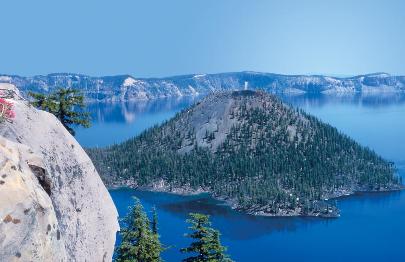
High peaks and active volcanoes in the captivating Cascades
There is more to the three coastal states of the West than seafront. The epic line of mountain peaks that is the Cascade Range runs north-to-south from Washington, down through Oregon and into California – and offers a wealth of volcanic scenery ideal for remote road trips.
This is absolutely the case with the Volcanic Legacy Scenic Byway, an All-American Road that drifts for some 500 miles between southern Oregon and northern California.
At its Oregon end, the byway commences with Crater Lake National Park, where Crater Lake fills the shattered caldera of Mount Mazama, an ancient volcano that was destroyed by its final eruption. Further on, the route flits past Mount Scott, an 8,934ft stratovolcano.
The theme continues beyond the state line into California, where Lava Beds National Monument throws out hard volcanic scenery on the flank of Medicine Lake Volcano – a 7,921ft active giant. Later, the road hits Lassen Volcanic National Park, where mud boils around Lassen Peak.
At a glance Useful Facts
- The Volcanic Legacy Scenic Byway is perfect for active travellers. Visitors can fish and canoe the waters of Upper Klamath Lake, Oregon’s largest lake; hike to the top of the 10,457ft (3,187 metre) summit of Lassen Peak, or explore more than 700 lava tube caves at Lava Beds National Monument, not to mention enjoy hundreds of other recreational opportunities along the route.
- The Volcanic Legacy Scenic Byway is superb for wildlife enthusiasts. The Klamath Basin is home to six National Wildlife Refuges where more than one million birds, including bald eagles, rest during the peak migration period. Shasta-Trinity National Forest is also home to hundreds of species of bird, whilst Crater Lake National Park is home to black bears, birds and native amphibians.
- For visitors looking to experience a quieter side of California, the Shasta Cascade region provides the perfect playground. Home to Mounts Shasta and Lassen, crowds are smaller at the lesser-known nearby National Parks compared with their more famous Californian neighbours. Recreational opportunities abound including a 50-mile mountain-bike trail that circumnavigates Mount Shasta.
- As well as being home to two All-American Roads, California boasts four National Scenic Byways. From the cultural beauty of the Arroyo Seco Historic Parkway in Los Angeles County to the heat of Death Valley Scenic Byway, visitors can also experience more volcanic scenery on the Ebbetts Pass Scenic Byway or follow California’s highest drivable pass, the Tioga Road in Yosemite National Park.
- Oregon is home to the spectacular Columbia River Highway. It spans 74 miles between Troutdale and The Dalles and takes in gushing waterfalls, including Multnomah Falls (Oregon’s highest), and beautiful wildflower displays. Visitors can expect fantastic views of the Columbia River Gorge as well as great spots to hike and cycle.

